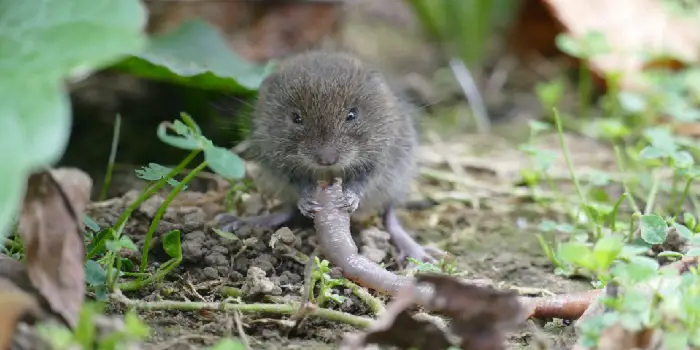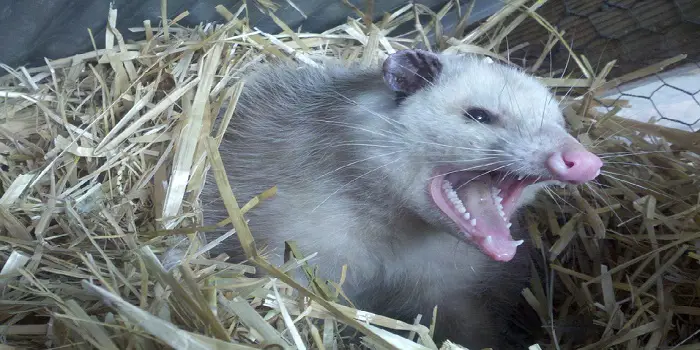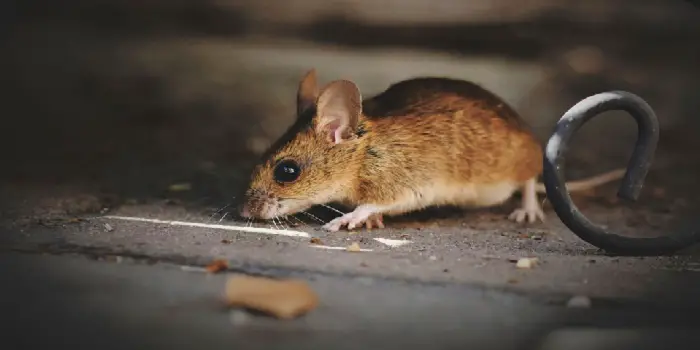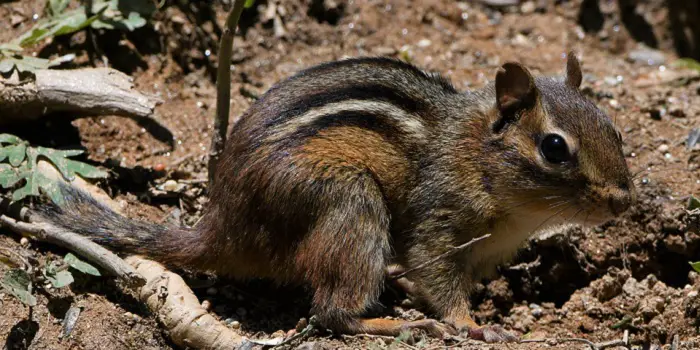
Your home is prone to pests and animals making their way to the foundation.
Chipmunks are a prime example of animals that make their way to your home’s foundation, especially during hibernation time.
Once the period is over, you will indeed find a bunch of holes that you will need to cover.
But, you will have to be smart about this.
Since chipmunk tunnels can go quite deep, you want to ensure that you are using the right mechanisms for an effective result.
You might be wondering why this is important. Well, leaving those holes can be quite damaging to your home.
So, you want to ensure that you cover them up as soon as possible.
Over here, I will be discussing what you should expect in terms of a chipmunk hole. Moreover, you will also learn how to fill these holes up.
So, before any further ado, let’s get to the main thing.
How to Identify a Chipmunk?
The most common Chipmunk species are Western and Eastern Chipmunks.
A few others may also include Townsend’s, Alpine, Hopi, Least, Siberian, Yellow-Pine, Uinta, Allen’s, Yellow Cheeked, Gray Collared, Durango, Gray-Footed, Siskiyou, Buller’s, and the Panamint.
Depending on the species, these striped rodents can be gray to reddish-brown in color.
Their tail length measures about 3 to 5 inches. And they may weigh anywhere between 1.5 ounces to 4.4 ounces.
Chipmunks usually love to feed on nuts, seedlings, berries, grains, mushrooms, along various other fruits and veggies.
If you have recently noticed the damage to your crops and holes dug in your garden soil, most likely it’s because of a chipmunk infestation problem.

What Do Chipmunk Holes Look Like?
First thing’s first, what do chipmunk holes look like?
You will find that these are relatively large when taking a look from the inside.
Given the size of chipmunks and how they store their food during hibernation, they take up a lot of space to create their tunnels.
With such large tunnels or holes running inside your home, you want to ensure you fill them up effectively.
Keep in mind that there is always a possibility of having more than one chipmunk invade your home.
So, be prepared to fill up more than one tunnel.
Another thing that you will need to be careful of is that these tunnels can easily run up to 20 to 30 feet.
Yes, you read that right.
Chipmunks dig deep into the ground to get to a safe area for themselves. Moreover, you will find these relatively difficult to spot as well.
So, what should you expect when searching for chipmunk holes? They’re pretty smart at hiding the entrance of their tunnels.
You will notice the holes with only 2 to 3 inches in diameter running around your home.
What Can You Fill Chipmunk Holes With?
You will find these around your pots, plants, and other similar items around your home.
So, what can you do when you once you observe that there are chipmunk holes around your home?
I have come up with a list of three things that you can add to the tunnels and keep chipmunks away.
While not every option is a permanent solution to keep the chipmunks away, they do prove to be effective in covering them up.
They include adding cat litter, fine gravel, or cement to the tunnels present around and under your home.
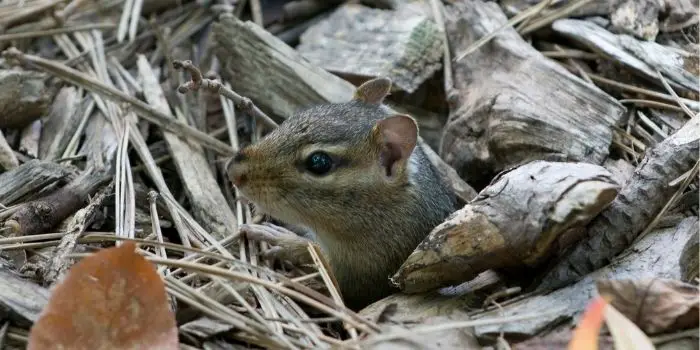
1- Cat Litter
The first one to put in chipmunk holes is cat litter.
You might be wondering why and how this is appropriate, so let’s get to it.
If you have a pet cat, using its litter to add to the chipmunk tunnels is perhaps an easy solution. It will give you a quick result.
But is it extremely effective? Well, this is debatable.
Cat litter only works once your cat has done some business on it. Clean litter will not be as effective as using used litter by your cat.
But how does this work? Well, it’s pretty simple.
Once you fill up the tunnels with cat litter, the chipmunks will fear that a predator has marked its territory in the area.
This will keep them away for a while.
But this won’t work if the litter is unused by your cat as it does not have that smell of urine and feces to scare the chipmunk!
Now, the other thing is that cat litter is not going to be the best thing to gnaw at.
So, chipmunks will turn away once they get the taste of the litter as they try to move it.
Lastly, when it comes to the drawbacks of this method, you will find that you need a cat to get this done.
And then, you will also not be able to use it everywhere around your home as this can be harmful to your green area.
2- Gravel
The next option we have is the use of fine gravel to cover up the chipmunk holes.
This is more acceptable to place outdoors, surrounding the soil in your garden.
But why is this so?
Well, the gravel allows for water to pass through and ensures that no harm is done to the greenery on your outdoor lawn.
The best thing about this is that your chipmunks will not be able to claw it out.
Mostly because it is so finely milled that a refilling mechanism occurs as soon as they move it.
So, it works in the most effective ways for you without killing the animal.
A great thing when it comes to fine gravel is that you can cover it up with soil and make it look like a part of your garden.
No one will be able to tell it apart!
3- Cement or Sand
The last option we have for you tilts towards a more permanent solution than the others.
Filling in the chipmunk tunnel with cement or sand can be added to areas where you think your home’s foundation is getting damaged.
By making use of cement or sand, you can easily fill up the tunnels while leaving a few inches off the top.
This way, you can add a bit of soil on the top to cover it up and blend it with the surrounding areas.
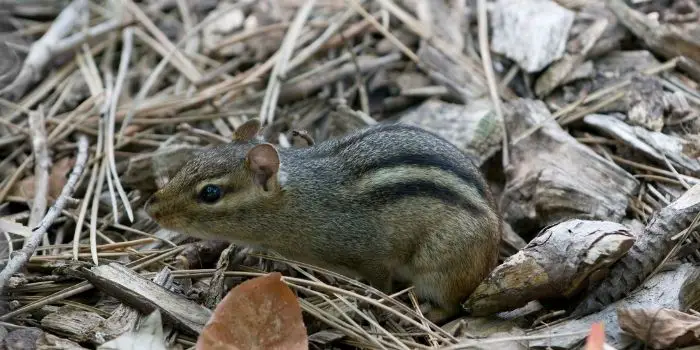
Are Chipmunks Dangerous to Humans?
While these critters are not vicious, they can still hurt you.
Firstly, due to their natural behavior to constantly chew on things, they can bite or chomp down if they find pets or humans nearby.
Secondly, chipmunks are part of the rodent family. They can carry various parasites and diseases that can spread to pets, kids, and humans through their feces.
Plus, chipmunks, if infested by ticks or fleas, can spread fatal diseases like flu, plague, rabies, skin rashes, Lyme Disease, etc.
Can You Put Poison in Holes to Kill Chipmunk?
Poison pellets or baits are effective in eliminating chipmunks forever.
But these do have their pros and cons.
First of all, while using the fatal baits and poisons, you should take precautions while handling them.
These can be found by your pets or kids and have severely harmed them.
Secondly, when the poison is eaten by chipmunks, you should be prepared to dispose of the chipmunk bodies with proper care.
If you leave the body in or around your property, the carcass may start to rot and can attract many more damaging vermin like raccoons, rats, golden eagles, flies, and many others.
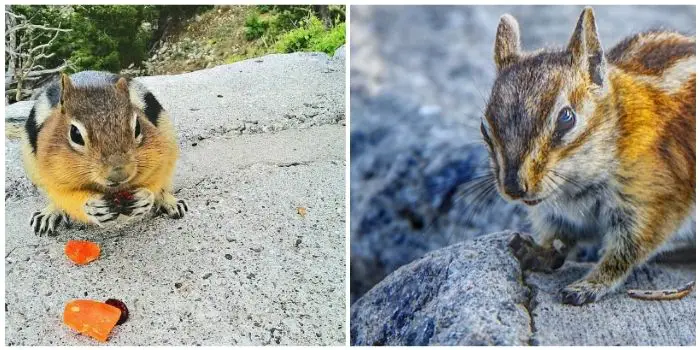
Can You Live Trap Chipmunks Near their Holes?
Trapping chipmunks near their hole and relocating them to other faraway places can be a good way to get rid of these small creatures.
The good thing is if you are successful in getting all of them trapped, most likely, they will not come again around your property.
When it’s about choosing the right trap, you can pick any trap that is meant to capture mice or rats due to their similar size.
Few different types of chipmunk traps that are most popular include:
- Electronic zappers
- Box cages with spring-activated doors
- Spring-activated stun/kill “mousetrap style” traps
Besides the above, you can also use Rolling bars over a bucket (also called chipmunk bucket of death or pool of death) to trap chipmunks.
It’s an easy and most effective trapping method that can be made at home in a DIY way.
All these traps will work in different ways.
Depending on the severity of the pest infestation and a few other environmental factors, you can choose the one that is most suited for you.
Before putting a live trap, watch for the activity and trails they use for a few days.
Then locate the baited trap at a place that is difficult for them to find, like under logs, shrubs, or leaning rocks.
Once chipmunks get accustomed to living traps and try to eat there fearlessly, it becomes easy for you to trap and relocate in the wild.
Many people also consider drowning them after getting them trapped. If you want, you can take that route as well.
What to bait chipmunk trap with?
Chipmunks are easy to trap if you understand their taste buds.
In other words, if you want to successfully capture the chipmunks in your yard, it’s important to lure them using the right bait.
Most chipmunks’ traps will come with sample baits, but not all of them.
So, it’s good to learn what foods will attract the chipmunks most towards your trap.
In general, the types of baits for trapping chipmunks can be divided into two categories:
a) Natural baits
These are mostly the types of foods that a chipmunk love to eat.
Peanut butter is the number one food option that can be used to bait chipmunks.
Chipmunks will love to feed on nuts. And when coated with butter and sugar, it works even better.
Just in case you or any of your family members are allergic to nuts, there are a few other baiting options.
These include corn kernels, raisins, shelled sunflower seeds, breakfast cereals, etc.
b) Chemical baits
Chemical baits are generally the lethal poison products for chipmunks that are manmade.
These contain chemical toxins meant to kill chipmunks when ingested or touched by them.
Some of these chipmunk poisons can also work by stopping their reproduction and infestation.
Few commercially available chipmunks bait you can buy online at stores like Amazon include:
- Farnam Just One Bite II Bar
- WCS NB Squirrel & Rodent Paste Bait
- Motomco Tomcat All Weather Bait Chunx
- Sweeney’s Mole & Gopher Poison Peanuts
Remember, the bait will be an effective solution only when it successfully lures/attracts a chipmunk inside the trap.
So, when baiting a chipmunk trap, ensure that you place it inside a trap so that the entire body (including the tail) will get trapped as soon as the chipmunk steps on the spring and activate the door.
Also, make sure that you wear gloves when baiting, as chipmunks can easily detect the scent of humans, which will prevent them from coming inside.
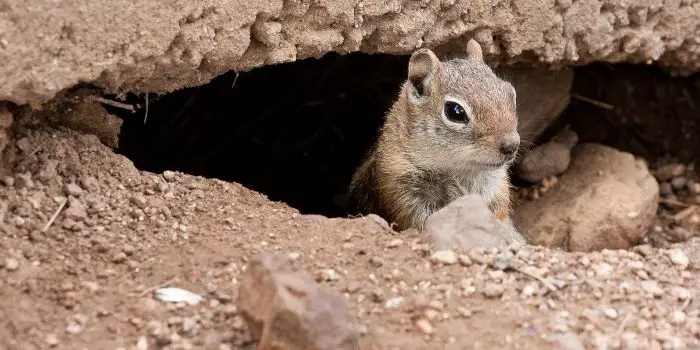
How to Prevent Chipmunk from Burrowing Holes in the Future?
Now, if you’re wondering what the best solution for you is to keep chipmunks from burrowing holes in the future, then look no further.
You will have to think of solutions that will be sustainable.
While installing electronic repellents/sprinklers in the garden can be pretty useful, here are a few more of them that I think can work for you…
1- Fencing
One of the options available to you is fences.
Using the right type of wire mesh fencing can ensure that you keep chipmunks away from your home for good.
With these fences around the perimeter of your garden or your home, you will no longer have to take extreme measures of adding cement to chipmunk holes or anything else.
Be smart about this, and invest in fencing that prevents chipmunks from burrowing holes in your home!
To prevent chipmunks from digging, make sure you extend the wire mesh a little below the ground surface.
2- Let the Cat Do the Work
Cats are good predators that prey on small rodents like chipmunks.
If you have a pet cat at home, you can let her do the job for you.
Just leave her out during the daytime, and she will scare the chipmunks away and make them remain out for long.
3- Clear the Mess and Food Sources
Like all other rodents, chipmunks are also attracted to their favorite food, shelter, and right dwelling conditions.
So, make sure you keep your home surroundings and yard free of clutter.
Develop a habit of trimming down overgrown flowers or shrubs that are close to your building.
Plus, move the bird feeders (if you have any in your yard) at a considerable distance.
Also, get rid of foods that chipmunks like to eat. These can be nuts, berries, seedlings, grains, etc., in your garden.
4- Use Chipmunk Repellent Scents
Chipmunks can’t stand the smell of garlic.
They also do not like to be around the smell of mothballs and strong oils such as cinnamon, eucalyptus, peppermint, and citrus.
Since chipmunks hate all these scents, you can use these as a homemade chipmunk repellent to humanely drive them off your property.
You can simply prepare and spray some of these scents in your garden, especially on plants and flowers where chipmunks usually hide.
When they come near and smell these fragrances, they will automatically deter away.
The Conclusion
Chipmunks are known to be the smallest animals in the squirrel family.
Since they can cause drastic damage to your backyard, garden, and building foundation, it’s good to get rid of them and keep them away forever.
Filling their tunnels and holes in the soil is one good way to do it without harming the animals.
So, if you suspect chipmunks to be around, why not try the above methods and stay stress-free?
Share the post "What Can You Put Down Chipmunk Holes and Tunnels?"

Welcome to ProShieldPest.com. I am Tina Jones. I have been working as a pest removal professional in Winslow, Arizona lately. At present, I love to spend my time with my family as a retiree.
Here I share all my knowledge and experiences to help people understand better how they can stop pests at their homes without actually killing them. Hopefully, the information you will find here will help in safeguarding your home! You can check more about me here.

